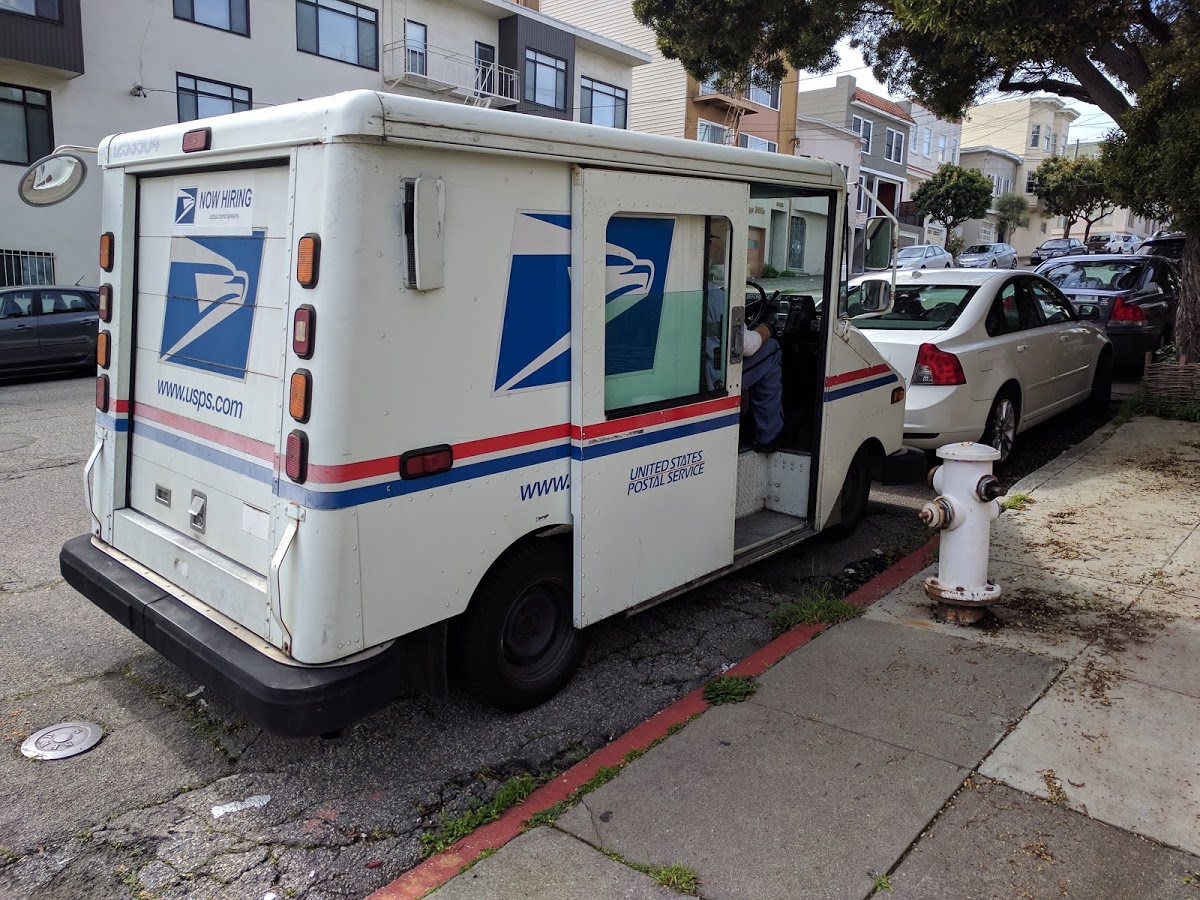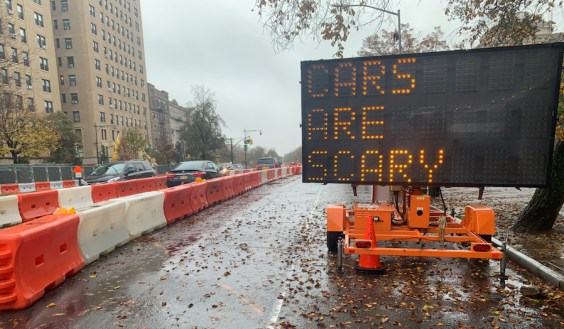Sustainability leaders are furious at the United States Postal Service for dragging its feet on ditching gas-powered mail trucks and other vehicles — and the agency doesn't seem to be seriously considering non-automotive mail delivery options, either.
In a Jan. 6 notice in the Federal Register, USPS re-committed to its plan to replace as little as just 10 percent of its 231,000 aging delivery trucks with electric vehicles over the next 10 years, citing the logistical and financial challenges of keeping EV batteries charged along sometimes-lengthy routes.
That time frame would narrowly avoid the deadline set by President Biden last month when he issued an executive order obligating all federal agency fleets to go electric by 2035. And it would also mean that 90 percent of the largest government-owned fleet in the country would be powered by fossil fuels for decades to come — and that most of the popular pedestrian-friendly truck designs the agency unveiled last year would still run on gas.
The Natural Resources Defense Council soundly rejected the agency's reasoning, which drastically over-estimates the distance the average mail truck travels while simultaneously under-estimating the mileage the average EV is capable of covering before it needs to be plugged in. The group pointed out that fewer than 6 percent of U.S. mail routes are longer than 70 miles, while today's electric cargo vans can already go 140 miles on a charge — a capacity that's likely to go up as battery technology improves.
“The U.S. Postal Service confirmed that it’s dead set against considering the real-world financial and health benefits of transitioning to zero-emitting electric vehicles," said Patricio Portillo, transportation analyst at NRDC, in a release. "This is a lost opportunity and a huge disappointment."
Troublingly, the agency's proposal also completely ignored the potential of electric cargo bicycle and tricycle delivery, which studies show can slash emissions by roughly one-third compared to electric cargo vans, particularly in dense cities where mail routes are short.
Delivery companies increasingly use electric cargo bikes for inner-city deliveries. This is good. No more delivery vans blocking the road.
— Henk Swarttouw (@copenhenken) January 6, 2022
Now we should redistribute road space accordingly: wider cycle lanes and fewer car lanes. #cargobike #cyclelogistics pic.twitter.com/j4USlxXvgP
Many citizens of Germany, Australia, and the Netherlands already receive their post by e-bike, and North American advocates have long argued that they're an under-utilized tool in the country's fight to clean up the transportation sector — particularly in cities that are already building the protected infrastructure necessary to support safe bike delivery.
Just 49 of the 231,579 delivery routes USPS runs are currently completed by bicycle, all of which are limited pilots in Florida and Arizona.
Advocates say that's not nearly enough — particularly given America's rising roadway death toll. Postal trucks are involved in more than 29,000 crashes every year, costing taxpayers millions in settlements, as Streetsblog has previously reported.
Breaking: US Postal Service says electrifying all mail trucks would cost $3.3B.
— David Ferris (@DavidFerris) January 7, 2022
So the question: Is Congress willing to pony up?
The USPS didn't totally rule out the possibility of more meaningfully greening its fleet — at least when it comes to its cars.
When the agency first announced its plan to a congressional panel in February of last year, Postmaster General Louis de Joy told critics that it could conceivably achieve 90 percent fleet electrification with "three or four extra billion dollars," an estimate that experts later scaled back to $3.3 billion. If it passes, the latest version of President Biden's Build Back Better Act would give the agency $6 billion specifically to buy electric trucks.
No one has worked out the math on how much that price tag might shrink if a substantial portion of the e-cargo van fleet was replaced with e-cargo bikes and trikes. Considering that even the highest-capacity "light electric vehicles" cost at least two-thirds less than the average van, though, advocates say ditching trucks on appropriate routes makes fiscal sense, in addition to the safety, emissions, and health benefits of right-sizing the fleet for city neighborhoods.
Advocates say that America can't wait any longer for a meaningful change — and they're not accepting the postal service's excuses.
"Given the current and future economics of electric vehicles, there’s no reason planning for the widespread shift to emissions-free vehicles should wait," Portillo added. "Electric vehicles clearly make long-term economic sense, and the postal service should start planning now for a more rapid transition.”






